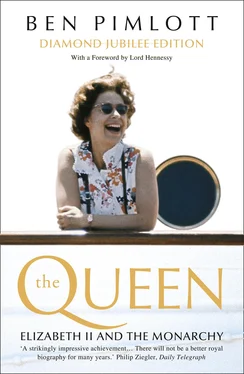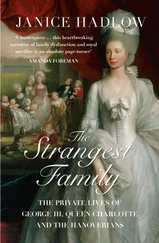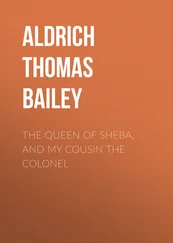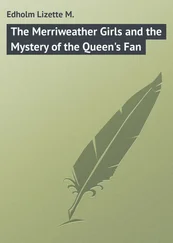There remains the difficulty for the rest of humanity – grubs without a destiny – in understanding the mentality of somebody with such extraordinary expectations. A distinctive character, however, was beginning to emerge. Authentic portraits are rare – vignettes by passing visitors are generally coloured by excitement at meeting royalty, and tell more about the witness than the subject. But there are enough thoughtful descriptions to confirm the part-flattering, part-disconcerting impressions provided by Crawfie, of a reserved, strong-willed, narrow-visioned, slightly priggish child, without intellectual or aesthetic interests, taking what she is given as part of the natural order, but with greater mental capacities than any close member of the family cared to appreciate. When she was still thirteen, the Archbishop of Canterbury, Cosmo Lang, noted after ‘a full talk with the little lady alone’ before he conducted her confirmation service, that ‘though naturally not very communicative, she showed real intelligence and understanding’. 42More than two years later, Eleanor Roosevelt formed a view of her that was strikingly similar. The wife of one Head of State assessed the daughter of another as ‘quite serious and a child with a great deal of character and personality . . . She asked me a number of questions about life in the United States and they were serious questions.’ 43
The experience of her as an able, but above all single-minded, young person was shared by Horace Smith, who had more contact with her during the war than any of her other teachers apart from Crawfie, and who taught her in the subject that interested her most. The Princess was not, he considered, ‘a person who takes up interests lightly, only to drop them just as easily a short time later. If and when her interest is aroused, she goes into whatever subject it is with thoroughness and application, nor does her interest wane with the passing of time or the claim of other new matters upon her attention.’ In addition, he noted, she had ‘a keen and retentive mind’. 44
Such perceptions were combined, however, with a sense that she was young for her age, and remained in appearance and manner still a child until well into her teens. Perhaps there was an element of wishful thinking: the princesses’ childhood was part of the status quo ante bellum which it was hoped to restore. Such a feeling may have been strongest of all in the King and Queen, who liked her to wear the clothes of a child after she had ceased to be one. Nevertheless an uncertainty about whether Princess Elizabeth was precocious or immature, or both, is a recurrent feature of the accounts. Chips Channon observed the princesses in procession at a service at St. Paul’s in May 1943, ‘dressed alike in blue, which made them seem like little girls’. 45Peter Townsend, an RAF officer who joined the Royal Family as an equerry to the King nine months later, found that they were not too old to lead him in a ‘hair-raising bicycle race,’ and recalled Princess Elizabeth as ‘charming and totally unsophisticated’. 46Alexandra of Yugoslavia’s recollection of meeting her British cousins at Windsor, describes a childish ritual involving the princesses and their dogs. When tea was brought in, they insisted on feeding (with the aid of a footman) their four corgis first. 47
Preparation for her osmosis from child-princess, locked in a tower with her schoolbooks or playing in the park with her sister, to constitutionally responsible Heiress, was scratchy, like much else in wartime. For some time, the Crawfie and Marten regime had been supplemented with French lessons from the Vicomtesse de Bellaigue. According to one of the Queen’s ladies-in-waiting, Lady Helen Graham, Elizabeth had been encouraged to attend closely to the news bulletins of the BBC. 48‘Already the Princess has a first-rate knowledge of State and current affairs,’ a courtier declared in 1943. 49
Various accounts were given of the level of her knowledge, some of them doubtless exaggerated, in order to demonstrate her fitness for the tasks ahead. It was said that, in addition to French, she was fluent in German. When she was eighteen, The Times claimed she was highly musical and although ‘like some others of her sex, she is no mathematician,’ she was familiar with ‘many classics’ in English and French. 50When a magazine editor wrote to the Palace to check a list, supplied by ‘a friend near the Court,’ of books and authors the Princess had allegedly read, a courtier replied firmly that the list could be published as correct. It consisted of ‘many of Shakespeare’s plays,’ Chaucer’s Canterbury Tales , Coleridge, Keats, Browning, Tennyson, Scott, Dickens, Austen, Trollope, Stevenson, Trevelyan’s History of England , Conan Doyle, Buchan and Peter Cheyney. 51To this remarkably large collection might be added the Brontës: at the end of the war, Lisa Sheridan found the Princess reading Jane Eyre and Wuthering Heights , and expressing a preference for historical novels and stories about the Highlands. 52Was it true? If such accounts were even half accurate, the Princess would have been a strong candidate for a place at university, where she might have extended her intellectual range. Neither university nor even finishing school, however, was considered as a possibility. Instead, like a butcher or a joiner, she apprenticed for the job she would be undertaking for the rest of her life by doing it.
Her first practical experience of the grown-up world of royalty was to head a regiment. In January 1942, following the death of the Duke of Connaught, she was asked to take his place as honorary Colonel of the Grenadier Guards – a natural choice, some felt, in view of her contact with the Grenadiers at Windsor. The offer was accepted, and on her sixteenth birthday she carried out her first engagement as Colonel at Windsor Castle, inspecting the Grenadiers in the company of her father. Thirty reporters and ten photographers were granted press passes to cover the event. 53Cecil Beaton marked it with one of his most famous pictures, which shows the Heiress Presumptive in uniform, fresh-faced and half-smiling, with her jacket unbuttoned and her hat at a coquettish angle. Afterwards, she was hostess to more than six hundred officers and men, entertained by the comedian Tommy Handley. 54The Grenadier Guards were delighted by their acquisition, and those who dined with her in the officers’ mess recall her as ‘charming, and very sincere’. 55Yet despite this dramatic début, Buckingham Palace kept up the fiction that the Princess was still a child, and American press requests for help with a story about her were met with the incomprehensible denial that she was entering public life. 56
Adulthood could not be postponed for ever. Princess Elizabeth’s coming-of-age, when she was entitled to succeed to the throne without need for a Regent, took place when she was eighteen, in April 1944. There was no débutante ball to celebrate the occasion. Instead, it was accompanied by the Princess’s graduation from a nursery bedroom to a suite. Here she was pictured by Lisa Sheridan, as if she were part of the interior design. ‘The upholstery is pale pink brocade patterned in cream,’ it was revealed. ‘The walls are cream, hung with peaceful pictures of pastoral scenes. The Princess’s flowered frock harmonized admirably with her room.’ 57There were other changes, to mark her rise in status. She was assigned her own armorial bearings, and her own standard which flew in whatever residence she happened to be occupying. She also acquired a ‘Household’ of her own, including, in July 1944, a lady-in-waiting. Meanwhile, she had unwittingly stimulated a minor constitutional controversy which engaged the best legal brains for several months.
Читать дальше












